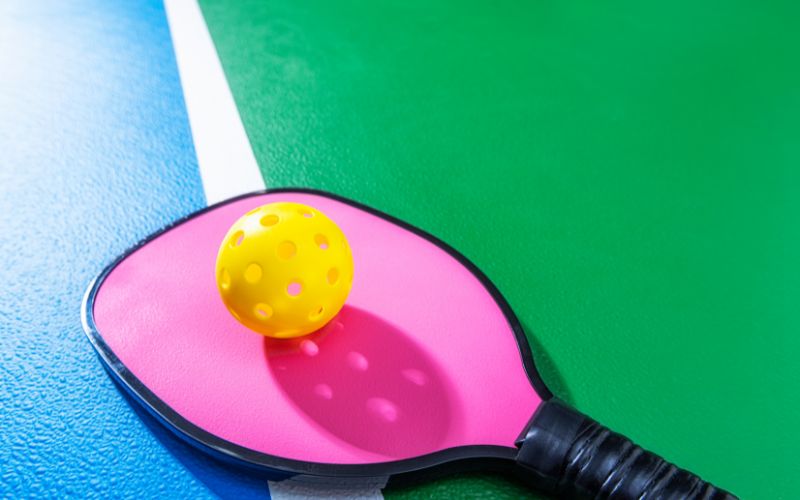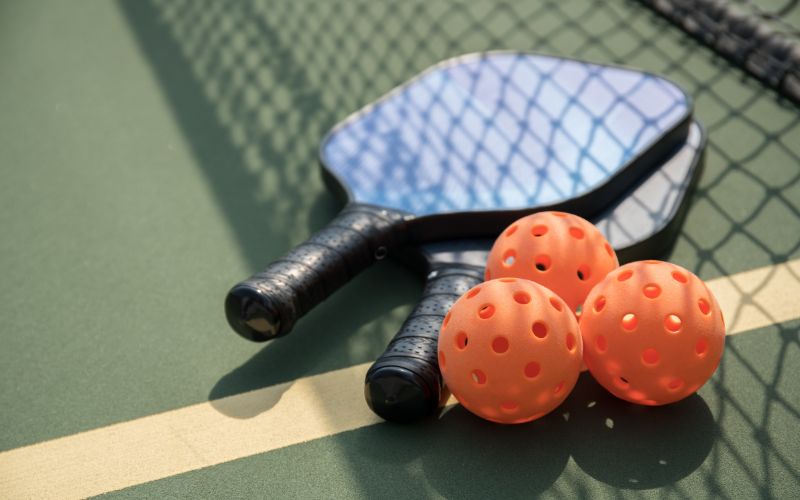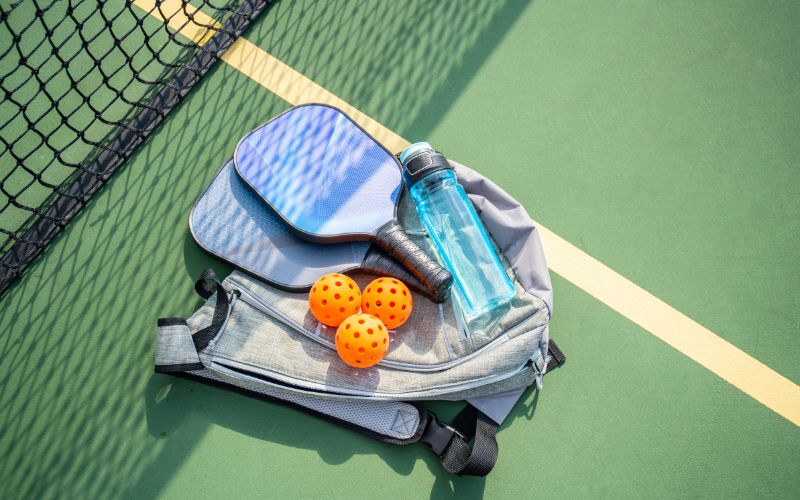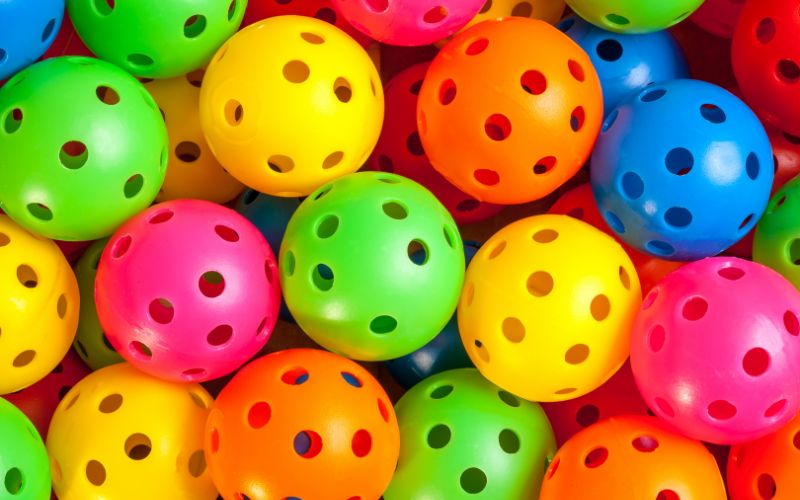Welcome to our comprehensive guide on pickleball equipment, where we explore the key components of the perfect pickleball kit. Whether you’re new to the sport or a seasoned player, having the right gear is essential for enhancing your performance and enjoyment on the court. In this article, we will delve into the must-have equipment that every pickleball enthusiast should consider. From paddles to balls, shoes, and more, we’ll help you make informed choices to ensure your pickleball game is at its best. Let’s dive in and equip you for success in the exciting world of pickleball!
Pickleball Paddle
A pickleball paddle, also known as a pickleball racquet, is the primary tool used by players in the sport of pickleball. It’s a flat, solid, and perforated surface that players use to strike the pickleball, aiming to return it over the net and into their opponent’s side of the court. The design and construction of the paddle can greatly impact a player’s performance, making it important to choose the right one.
Here’s what to look for when buying a new paddle:
- Weight: a great paddle are easier to maneuver, offering more control and quicker reactions at the net, increased spin and reduced vibration on the ball. Heavier paddles, on the other hand, provide more power and speed to your shots. It’s essential to find a balance that suits your playing style and physical strength.
- Materials: Pickleball paddles are typically made from a variety of materials, including wood, composite, and graphite. Each material has its advantages:
- Wood: Wood paddles are often more affordable but may be heavier and less durable. They are suitable for beginners and recreational players.
- Composite: Composite paddles offer a good balance of power and control. They are popular among intermediate players.
- Graphite: Graphite paddles are known for their lightweight and excellent control. They are a top choice for advanced players looking for precise shot placement.
- Grip Size: The grip size of a paddle is a matter of personal preference. Choosing the right grip size ensures comfort and prevents hand strain. To determine the appropriate grip size, measure your hand’s circumference or try different paddles to find the one that feels best.
- Paddle Shape: Pickleball paddles come in various shapes. Traditional paddles have a rectangular shape, while others are more rounded. Some players prefer a wider face for a larger sweet spot, while others prefer a more traditional design for better control.
- Edge Guard: An edge guard is a protective strip around the perimeter of the paddle. It helps protect the paddle from damage during play, especially when you hit the court surface. Look for a paddle with a durable edge guard to prolong its lifespan.
- Price: Consider your budget. Paddle prices can vary widely, and while high-end paddles may offer advanced features, there are many affordable options that provide excellent performance for recreational players.
- Brand and Reviews: Research and read reviews to get an idea of the paddle’s quality and performance. Reputable brands often produce reliable products.
- Noise Level: Some paddles generate more noise when they strike the pickleball, which can be a consideration if you play in a noise-restricted area. Look for paddles that dampen sound if this is a concern.
- USAPA Approval: If you plan to play in official tournaments or leagues, make sure the paddle is approved by the USA Pickleball Association (USAPA). Approved paddles meet specific guidelines for size, weight, and materials.
Pickleballs
A pickleball is a unique ball designed specifically for the sport of pickleball, which is a blend of tennis, badminton, and ping-pong. Pickleballs are smaller and have distinct characteristics that differentiate them from other types of balls. When buying pickleballs, it’s crucial to understand what to look for to ensure a great playing experience.
- Material: Pickleballs are typically made of durable plastic. They can be made of either one-piece construction or two-piece construction. One-piece balls are seamless and often preferred for their consistency and durability. Two-piece balls have a seam but are still popular among players.
- Indoor or Outdoor: Pickleballs are categorized as either indoor or outdoor balls. Indoor balls are designed for use on indoor courts, providing a smoother bounce. Outdoor balls are specifically crafted to withstand outdoor conditions, such as wind and temperature variations. Ensure you select the appropriate type based on your playing environment.
- USAPA Approved: If you plan to play in official tournaments or leagues, make sure the pickleballs are approved by the USA Pickleball Association (USAPA). Approved balls meet specific standards for size, weight, and performance, ensuring a consistent playing experience.
Pickleball Net
A pickleball net is a crucial component of the pickleball court, serving as the central divider that separates the playing areas for both sides. It plays a key role in maintaining the integrity and fairness of the game. Here are its primary characteristics:
A standard pickleball net is set at a height of 36 inches (91.4 cm) at the sidelines and 34 inches (86.4 cm) at the center. This height is designed to create a challenging yet fair playing environment. The net spans the width of the pickleball court, which is 20 feet (6.1 meters) in total for doubles play and 22 feet (6.7 meters) for singles play. This width ensures that the court is properly divided, allowing for consistent play on each side.
Moreover, Pickleball nets are typically constructed of durable materials like metal or aluminum for the frame, and the net itself is made of nylon or similar materials. These materials are chosen for their strength and resilience to outdoor elements.
Pickleball Gear, Braces and Supports
Pickleball braces and supports are specialized orthopedic devices designed to provide support, stability, and protection to players who may have experienced injuries or want to prevent them while playing pickleball. These braces and supports are often worn on various parts of the body, depending on the player’s needs and vulnerabilities.
In addition to injury prevention and support, some players use braces and supports simply for the added comfort they provide. These devices can help players feel more at ease, particularly if they have minor discomfort or concerns related to specific joints or muscle groups.
Pickleball Accessories
Pickleball Shoes
Pickleball shoes are specialized footwear designed for playing pickleball. These shoes are crafted to provide the necessary support, stability, comfort, and traction required for the quick lateral movements and stops and starts involved in the sport.
When choosing pickleball shoes, consider factors such as the type of court you’ll be playing on (indoor or outdoor), the level of cushioning and arch support, the outsole’s grip and durability, and the overall fit, ensuring they are snug but not too tight, to maximize performance and reduce the risk of injury. Additionally, opt for non-marking soles for indoor courts to maintain court surface integrity.
Pickleball Shirt, Skirt and Shorts
These specialized clothing designed for players participating in the sport. These garments are crafted to provide comfort, flexibility, and moisture-wicking properties to enhance a player’s performance on the court. When choosing pickleball shorts or skirts, look for breathable, stretchy materials that allow for ease of movement and keep you dry during intense matches.
Consider features like pockets for ball storage, an adjustable waistband for a secure fit, and the length that suits your personal preference. High-quality stitching and durable materials ensure longevity, making them a valuable addition to your pickleball attire.
Pickleball Training Aids
Pickleball training aids are tools, equipment, or devices designed to assist players in improving their skills, technique, and overall performance in the sport of pickleball. These aids are often used in practice sessions and training drills to enhance various aspects of the game, such as accuracy, power, control, agility, and strategy.
Examples of pickleball training aids include ball machines, target nets, practice paddles, training videos, agility ladders, and court positioning aids. These aids can be valuable resources for players looking to refine their skills and elevate their game to a higher level.
Pickleball Tape
Pickleball tape, also known as court tape or boundary tape, is a type of adhesive tape used to mark the boundaries of the pickleball court. It serves to clearly define the in-bounds and out-of-bounds areas for players during matches. Here’s how to use pickleball tape:
Court Setup: Before applying the tape, ensure that the pickleball court is properly laid out and marked with the appropriate court lines, including the baselines, sidelines, non-volley zone (kitchen) lines, and centerlines.
Boundary Marking: Use pickleball tape to mark the boundary lines on the court. Typically, this involves applying the tape along the outer edges of the sidelines and baselines. You may also use it to mark the non-volley zone lines, especially in temporary or non-regulation court setups.
Taut Application: When applying the tape, make sure it is pulled taut to prevent wrinkles or bubbles. Smooth out the tape as you go to ensure it adheres firmly to the court surface.
Visibility: Choose tape that contrasts with the court surface to ensure clear visibility for players. Standard colors like blue or yellow are often used.
Maintenance: Periodically check the condition of the tape. Over time, it may become loose or damaged, particularly if exposed to the elements in outdoor courts. Replace or reapply the tape as needed to maintain clear court boundaries.
This guide has provided a comprehensive overview of essential pickleball equipment and accessories to enhance your playing experience. From the perfect paddle to the right shoes and apparel, we’ve explored the key components of a well-rounded pickleball kit. We’ve also discussed how braces, supports, and training aids can further contribute to your success on the court.
Whether you’re a beginner or a seasoned player, choosing the right gear is essential for improving your performance and enjoying the exciting world of pickleball. By understanding what to look for in each piece of equipment and accessory, you can equip yourself for success and elevate your game to new heights. So, get ready to serve, volley, and rally your way to pickleball excellence!







